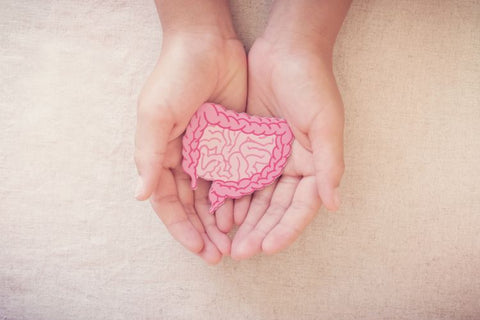When should you look more into your poop? While this is certainly a strange question, it is an important subject. Your poop can often be a sign of whether your body is feeling right. That is why you need to know what is considered healthy stool.
Talking about your poop is often an awkward but important subject. Since your waste products are the last point of your digestive system, you can gain valuable insight by examining your feces.
The appearance of your stool can sometimes provide insights into your gastrointestinal health. While toilets can harbor bacteria, it's important to note that they have their dynamics. Bowel movements mark the final stage of the digestive process, eliminating waste after nutrient absorption. The definition of a 'normal' bowel movement can vary, but maintaining a healthy diet with sufficient
Probiotic bacteria play a crucial role in maintaining a balanced gut environment, essential for digestion. Unhealthy diets, exposure to environmental toxins, and antibiotic use can disrupt this balance. Therefore, it's important to be mindful of these factors to promote a healthy digestive system
Now, let’s talk dirty!
Characteristics of Healthy Stool
Color
Normal Stool Color
Healthy stool color ranges from light to dark brown, even reddish-brown. This variation depends on several factors like food intake, bile pigments, and gut bacteria. Shades of tan or yellow can also be normal, especially after consuming foods rich in beta-carotene like carrots or sweet potatoes.
Abnormal Colors and Their Potential Implications
- Black stool: Can indicate bleeding in the upper digestive tract (stomach, esophagus, duodenum). Seek medical attention if accompanied by other symptoms like vomiting blood or severe abdominal pain.
- Red stool: Fresh blood can make stool bright red, indicating bleeding in the lower digestive tract (colon, rectum). Maroon or dark red stool could be due to digested blood, often seen with ulcers or hemorrhoids. Consult a doctor for a diagnosis.
- Pale or clay-colored stool: This may indicate a problem with bile production or flow, potentially due to liver or gallbladder issues. Consult a doctor for evaluation.
- Green stool: Often caused by green leafy vegetables or food dyes. However, persistent green stool could indicate bile pigment imbalance or infection. Consult a doctor if green stool persists.
Consistency
Ideal Stool Consistency
Healthy stool should be soft and well-formed, typically shaped like a smooth log or snake. It should easily pass without straining or feeling difficult.
Variations in Consistency and Significance
- Hard, lumpy stool: Indicates constipation due to insufficient fiber or water intake. Increase fiber and water intake or consult a doctor for chronic constipation.
- Loose, watery stool: This can be caused by dietary changes, stress, or temporary illness. If persistent, might indicate diarrhea due to infection or digestive issues. Consult a doctor if severe or prolonged.
- Mushy stool: Often caused by consuming fatty or oily foods. Usually not concerning, but consult a doctor if persistent or accompanied by other symptoms.
Shape
Common Stool Shapes
- Sausage-shaped: Ideal shape for healthy stool, indicating smooth passage through the intestines.
- Lumpy or segmented: This can be normal, especially after consuming high-fiber foods.
- Thin and pencil-like: May indicate constipation or narrowing of the colon. Consult a doctor if persistent.
Unusual Shapes and Their Meaning
- Flattened stool: This could indicate a blockage in the colon. Consult a doctor for evaluation.
- Very loose, shapeless stool: Often associated with diarrhea and underlying digestive issues. Seek medical attention if persistent.
Factors Influencing Stool Health: A Deep Dive
Your stool, though not the most glamorous topic, is a valuable window into your digestive health. Understanding the factors that influence its characteristics can help you maintain a healthy gut and well-being. Let's explore some key elements:
Diet
Impact of Fiber Intake:
Fiber acts like a broom in your digestive system, sweeping waste smoothly through your gut. Adequate fiber intake (around 25-35 grams daily) promotes:
- Regular bowel movements: Fiber bulks up stool, preventing constipation and straining.
- Soft stool consistency: Fiber absorbs water, keeping stool soft and easy to pass.
- Gut microbiome balance: Fiber feeds beneficial gut bacteria, fostering a healthy digestive environment.
Role of Hydration:
Water works like a lubricant, aiding stool passage and preventing constipation. Aim for around 8 glasses of water daily, adjusting based on your activity level and climate.
Gut Microbiome
Importance of a Balanced Microbiome:
Your gut is home to trillions of microorganisms, collectively known as the gut microbiome. These microbes play a crucial role in:
- Digesting food and absorbing nutrients
- Producing vitamins and short-chain fatty acids (SCFAs) that nourish gut cells and boost immunity
- Protecting against harmful pathogens
A balanced microbiome with diverse bacterial populations contributes to good stool health.
Effects of Antibiotics and Probiotics on Stool Health
- Antibiotics: While necessary for treating infections, they can disrupt the gut microbiome, leading to:
- Diarrhea
- Bloating
- Constipation
- Yeast infections
- Probiotics: Live bacteria supplements or fermented foods like yogurt can help restore gut balance after antibiotic use or in cases of digestive issues.
Tips for Maintaining a Healthy Stool
A healthy stool isn't just about what you eat, but it plays a big role! Here are some dietary recommendations to keep your poop in tip-top shape:
Fibre is key: Aim for 25-35 grams of fiber daily. This magical nutrient bulks up your stool keeps it soft, and helps it move smoothly through your digestive system. Load up on:
- Fruits and vegetables: Aim for a rainbow of colors! Apples, berries, pears, broccoli, carrots, leafy greens, and sweet potatoes are great sources.
- Whole grains: Choose whole wheat bread, brown rice, quinoa, oats, and whole-grain cereals.
- Legumes: Beans, lentils, chickpeas, and peas are packed with fiber and protein.
- Nuts and seeds: Chia seeds, flaxseeds, almonds, and walnuts are great additions to yogurt, salads, and oatmeal.
Hydration matters: Water keeps things moving! Aim for at least 8 glasses a day, especially if you eat a lot of fiber.
Go easy on the processed stuff: Processed foods are often low in fiber and high in refined sugars and unhealthy fats, which can slow down digestion and lead to constipation.
Mind your probiotics: Yogurt, kefir, kimchi, and sauerkraut are great sources of probiotics, which are beneficial bacteria that help keep your gut microbiome healthy and can promote smooth digestion.
Limit certain foods: Some foods can trigger digestive issues in some people. If you find certain things like dairy, greasy fried foods, or sugary drinks make your stool unhappy, try limiting them or avoiding them altogether.
Listen to your body: Pay attention to your bowel movements. Aim for regularity (most people go 1-3 times per day), and notice if your stool is consistently too hard, too soft, or uncomfortable to pass. If something feels off, talk to your doctor or a registered dietitian.
Conclusion
In the realm of digestive health, paying attention to your stool is not just a trivial matter but a crucial one. Your poop serves as a mirror reflecting the intricate balance of your digestive system. By understanding the characteristics of healthy stool and the factors influencing it, you gain insights into your overall well-being. A balanced diet, proper hydration, and the maintenance of a diverse gut microbiome are key pillars in ensuring a healthy stool. So, the next time you use the restroom, take a moment to glance at your stool – it might be telling you more about your health than you think.
FAQs
- Q: Why is stool color important?
A: Stool color can indicate potential issues in the digestive tract. Monitoring it helps identify abnormalities early.
- Q: How often should I have a bowel movement?
A: Most people go 1-3 times per day. Regularity is a key indicator of a healthy digestive system.
- Q: Can antibiotics affect my stool?
A: Yes, antibiotics can disrupt the gut microbiome, leading to changes in stool consistency and potential digestive issues.
- Q: Are there specific foods that promote a healthy gut?
A: Yes, foods rich in fiber, probiotics, and hydration contribute to a healthy gut and stool.
Q: When should I consult a doctor about my stool?
A: If you notice persistent changes in color, consistency, or shape, or if you experience accompanying symptoms, it's advisable to seek medical advice.
Other Resources
For those who are curious, want to expand their knowledge, or just like keeping informed, here are some links to sites that you might like. These online resources come from institutions that hold a sterling reputation for their expertise and stringent standards for relevant information.
Mayo Clinic - Topic: Digestive Health
https://www.mayoclinic.org/digestive-health/expert-answers/healthy-stool/faq-20412995
Mayo Clinic is a renowned medical institution known for its authoritative and reliable health information. Their page on digestive health provides expert answers, including information about healthy stools.
Harvard Health Publishing - Understanding Stool Colors and What They Mean
https://www.health.harvard.edu/diseases-and-conditions/understanding-stool-colors-and-what-they-mean
Harvard Health Publishing is associated with Harvard Medical School, making it a trusted source for health-related information. This article delves into understanding stool colors and their implications.
Canadian Society of Gastroenterology - Digestive Health
https://www.csgna.com/page/DigestiveHealth
Canadian Society of Gastroenterology is a professional organization dedicated to advancing the science and practice of gastroenterology. Their page on digestive health provides valuable insights from a Canadian perspective.
HealthLink BC - Stool Color Changes
https://www.healthlinkbc.ca/health-topics/aa15797
HealthLink BC is a government-funded service in British Columbia, Canada, providing reliable health information. Their page on stool color changes offers insights into what various colors may indicate.






